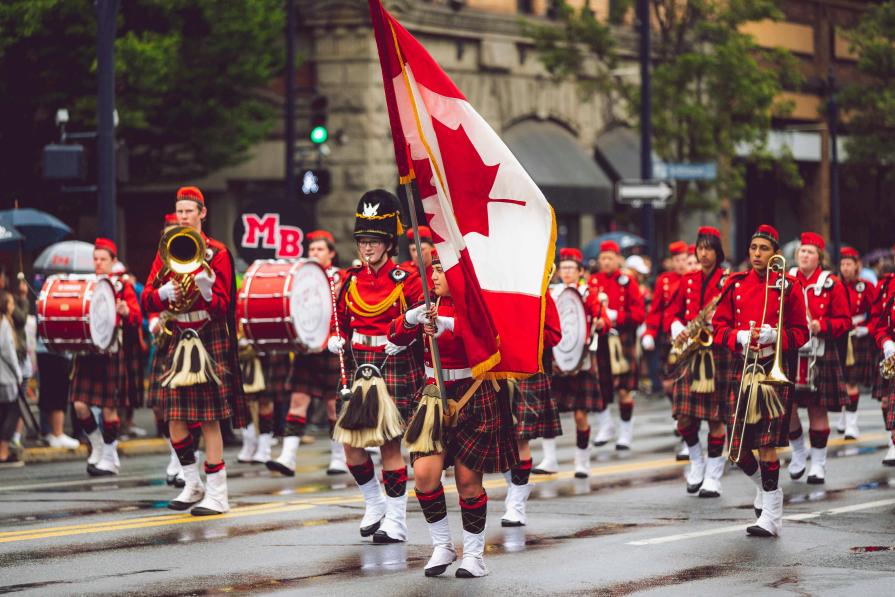Canada not so long ago counted a century and a half from the moment when several colonies - Upper and Lower Canada, Ontario, Nova Scotia and New Brunswick - were united into a new state.
We offer you a small selection of interesting facts, having learned which, you may have a different look at this state.

Canadians are sole proprietors

The lion's share of the local population prefers to live in their own housing, reflecting the peculiarities of the culture and geography of the country. Only about 10% of Canadians live in high-rise buildings, which are most commonly found in provincial capitals such as Toronto, Vancouver and Montreal. This situation is explained not only by the desire to have more space and privacy, but also by historical traditions. Unlike Europe and Asia, where population density is higher and vertical construction is a harsh necessity, in Canada, the abundance of land resources and natural beauty allows residents to acquire private houses and keep spacious plots.
The conventional wisdom that Canada is a huge, flat village is not far from the truth. The second largest country on Earth, Canada really gives the impression of endless expanses. Moreover, the word "Canada" itself comes from the Iroquois "kanata", which means "village" or "settlement". This name is the best fit for a country where low-rise buildings prevail even in cities.
Drivers in Canada are allowed to turn through red lights

Canadian roads are known for being liberal when it comes to some traffic rules. It is noteworthy that it is allowed to turn right at a red light. This rule has become a kind of symbol of the flexibility of the Canadian approach to traffic regulation. Unlike many countries where turning on red is strictly prohibited, in Canada, drivers can perform this maneuver, with the exception of certain sections. This rule applies throughout the country, with the exception of some large cities, such as Montreal, where local laws are stricter.
Ice wine is made here

Ice wine is a real masterpiece of winemaking, the pride of the country. The production of the drink began in Canada at the end of the XX century, and since then it has gained worldwide fame. Such wine is made from grapes harvested in December, when the berries are already frozen on the vine. This gives the drink its characteristic rich taste and aroma.
The process of producing ice wine is laborious and requires special conditions. The grapes should freeze naturally at a temperature of about −8°C or lower. During harvesting, the berries remain on the vine until they reach condition. They are then harvested and pressed, resulting in a juice with a high sugar and acidity content that gives the wine its characteristic sweetness and brightness of flavor. Due to the complexity and labor intensity of the production process, ice wine is not cheap: for a bottle of 0.375 liters, you will have to pay at least 50 Canadian dollars (about 2130 rubles).
This wine has a rich bouquet, in which you can catch notes of tropical fruits, honey, peaches and apricots. This makes it an ideal choice for desserts and holiday events. Some of the best places for ice wine production are regions such as Niagara in Ontario and the Okanagan Valley in British Columbia: the climatic conditions of these regions are ideal for growing grapes, which then become the basis for this exquisite drink.
There are 4 animals in Canada that are national symbols

Canada, a country with rich natural resources and a variety of flora and fauna, is proud of national symbols in the animal world. One of the most famous and officially recognized symbols is the beaver. This amazing creature is not fed with bread - let me build something from wood: Canada is home to the world's largest dam built by beavers.
This hardworking and tenacious rodent has become a symbol of perseverance and endurance, which is appreciated by Canadians. The "portrait" of the beaver adorns the 5-cent coin, recalling the importance of this animal to the culture and history of the country.
Canada has other symbols: the elk, a majestic and imposing animal, is one of them. Its image is minted on a 25-cent coin, emphasizing its importance to Canadians. The third symbol is the black-billed loon depicted on the dollar coin. This graceful waterfowl is a symbol of the natural beauty of Canada and its rich reservoirs.
A special place among the national symbols is occupied by the polar bear. This animal, which lives in the north of Canada, represents strength and endurance. He is depicted on the $2 coin.
There are 15.5 thousand polar bears in Canada

By the way, about bears. Canada is home to 15,500 polar bears, which is a significant part of the global population of this species. Polar bears live in the northern regions of the country, especially in Manitoba and the Northwest Territories, and are an integral part of the Arctic ecosystem. Their presence in Canada is so prominent that they have become part of the culture and lifestyle of the locals.
In the town of Churchill, located on the shores of Hudson Bay, polar bears are often seen on the streets, especially in the fall when they wait for the bay to freeze to start hunting seals. At this time, locals leave cars and houses unlocked so that passers-by can take shelter in case of an unexpected encounter with a bear.
The World's Deepest Underground Laboratory
One of Canada's most impressive scientific achievements is SNOLAB's underground laboratory complex. Located at a depth of two kilometers in a nickel mine near the city of Sudbury, it is a true citadel of science underground.
A hundred dollars smells like maple
Among the many notable facts about Canada, a special place is occupied by the statement that the hundred-dollar bill here smells like maple. This phenomenon has become the subject of many discussions: people believe that this is a tribute to national symbols. At the same time, the National Bank of Canada officially declares that neither maple wood nor special flavorings are used in the production of these banknotes.
An unexpected twist

Canadian cuisine is very diverse, because it is a country of migrants: one of the iconic dishes of the local cuisine is poutine. This is a relatively new dish that appeared about 60 years ago in the province of Quebec. It is an appetizing mixture of French fries and cheese with gravy; it quickly gained popularity not only in Canada, but also abroad.
The history of the emergence of poutine is surrounded by controversy: several Quebec restaurateurs have been fighting for the right to be considered its creators for 40 years. Despite this, poutine has become an integral part of Canadian culinary culture and is hugely popular in the United States, France and Belgium. Its name, derived from the French word meaning "disorder", perfectly captures the essence of this hearty and delicious dish.
Canadians are famous for their politeness and political correctness

In Canada, it is not customary to use terms that may be considered offensive or disrespectful. For example, instead of the word "Indians" they say "First Nation" and instead of "Eskimos" they say "Inuit". Such linguistic correctness reflects a deep respect for indigenous peoples and their cultures.
Anomalous low-gravity region in Hudson Bay
In the Hudson Bay area, the force of gravity is lower than in other parts of the planet. The reasons for this phenomenon are not completely clear, but it is assumed that it may be related to the density of the earth's crust or the movement of glaciers in the distant past.











